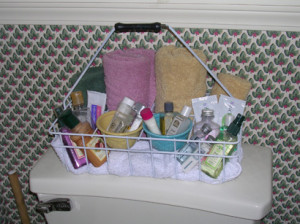Although I am rarely at loss for worded or topic ideas, readers are the main focus of this particular blog. Yes, my story is somewhat interesting but for the most part, I like writing what you want to know. One way I sought to accomplish that was to ask the members of a financial Facebook group I belong to what questions, information, or advice they'd like to have. One of the members asked for information on teaching kids about money, hence this post. If you have anything you'd like me to write about, or have any questions you'd like me to answer on the blog, please don't hesitate to contact me (note: I am not a certified money counselor, financial planner or anything remotely related to that. I am a mother and that's pretty much my only qualification on this topic).
If you have a child, you probably want them to understand money. You want them to know all the things you know, and maybe some that you don't, so they can be financially successful adults (however you define successful). In order to do that, you need to give your kids a solid financial education at home. School may touch on the topic but their attitudes and habits towards money are behaviors learned at home. In order to give them a great financial education, here are some suggestions:
- Include them in financial discussions. Bear in mind, this is dependent on the child's age but even a kindergartner can participate in conversations about saving money for a vacation, how much to spend on a birthday present, or what's a fair rate for her allowance (or salary. My friend does this instead of an allowance and I love the idea). Allowing them to participate in budget discussions not only shows them that talking about money is not taboo but it makes them feel empowered and responsible to be part of the family's money.
- Give them autonomy. Although many will disagree with me, I think gift cards for a kid are a great idea. It's a very basic beginner budgeting tool (as there's only a finite amount of money to spend and they have to figure out how to get the most from it), it gives them the freedom to dictate how they spend that money. Giving them the leeway to choose how they spend birthday money, part-time job money, or any other money that they come into is a good learning experience. And practice for later on, when they really have to manage their finances carefully.
- Make it fun. Let's face it. Money can be a pretty boring subject to discuss. Many adults hate talking about it and that's why they don't. But managing finances is as much a life skill as doing laundry and cooking and it needs to be taught. In order to do that, the learning should be shrouded in things that are engaging and entertaining. Playing games like Life, PayDay, and Monopoly are great learning tools for kids of all ages. In my house, we read books like Sweet Pickles Elephant Eats the Profits and Just Saving My Money. There are also some good money apps and websites you can use (our favorite is the Money Savvy Pig). Participating in these activities is tons more fun than giving a lecture on compound interest.
- Model the behavior you want them to learn. If you want to have a kid who's a healthy eater, you need to show them that fruits and vegetables taste good by eating them yourself. If you want to have a kid who exercises, they need to see you going out for a run or taking an exercise class. If you want to have a kid who reads, they need to see you sitting down and reading a book. The same goes for being financially responsible. If you want to have a kid who doesn't fritter away money, can separate needs from wants, knows how to save, is charitable (with either time or money), and is smart with investing, you have to do all of this. The whole “do as I say not as I do” routine is completely ineffective and will most likely perpetuate the cycle of poor money management.
- Make it age appropriate. This was mentioned in point 1, but it is crucial. What you can teach a 16 year old about money is completely different than what you can teach a 6 year old. If you are too basic for an older child or too sophisticated for a younger one, you'll lose their interest and the message and lesson will get lost. If you are at a loss for ideas or activities fore teaching kids–particularly the younger ones–about money, Pinterest has some great ideas. One favorite activity in our house is to play grocery store. We put out food all over our living room, give our daughter some play money and let her go shopping after she makes her list. It's fun, it's family time, and it teaches a valuable lesson. However, if she were 16, we'd probably do something entirely different to get our point across.
One essential element that you need to consider before teaching your kids about money is the child's readiness and eagerness to learn. Some kids are ready and willing to digest the information at a much younger age than others, and you need to work within that. Trying to force kid to learn before he's ready might actually wind up defeating the purpose. Although I'll admit that you won't know that until you try.
As parents, we need to not shy away from giving out kids a financial education. What they learn as a child will impact their future and we need to set them up for success the best we can.
Readers, how do you teach your kids about money? If you have adult kids, what worked and what didn't?


